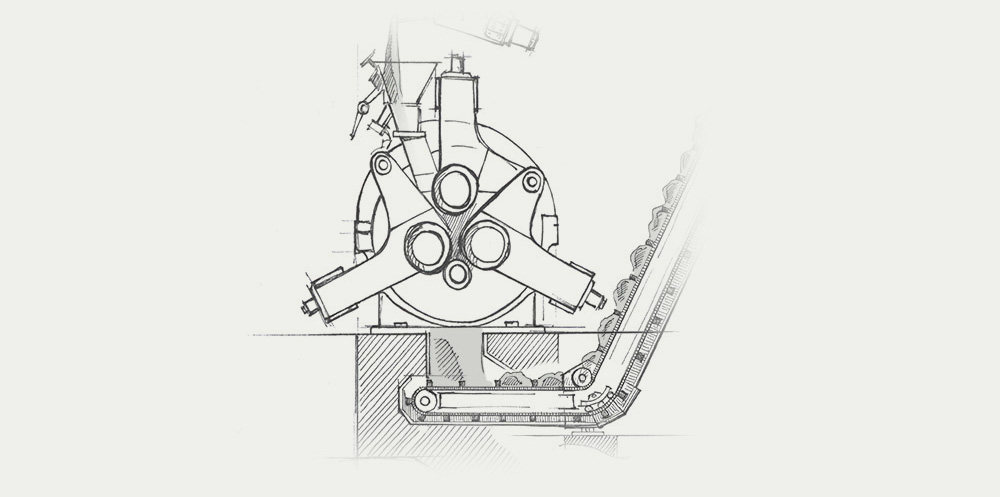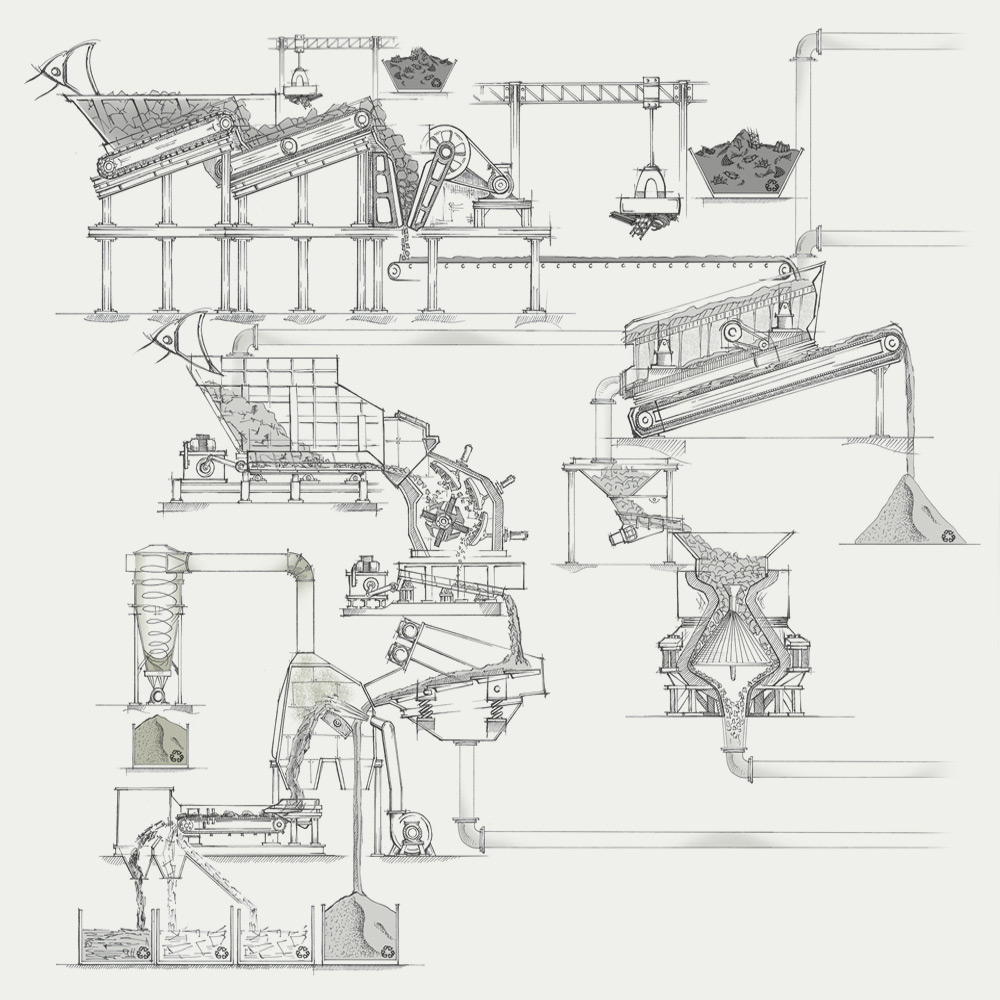
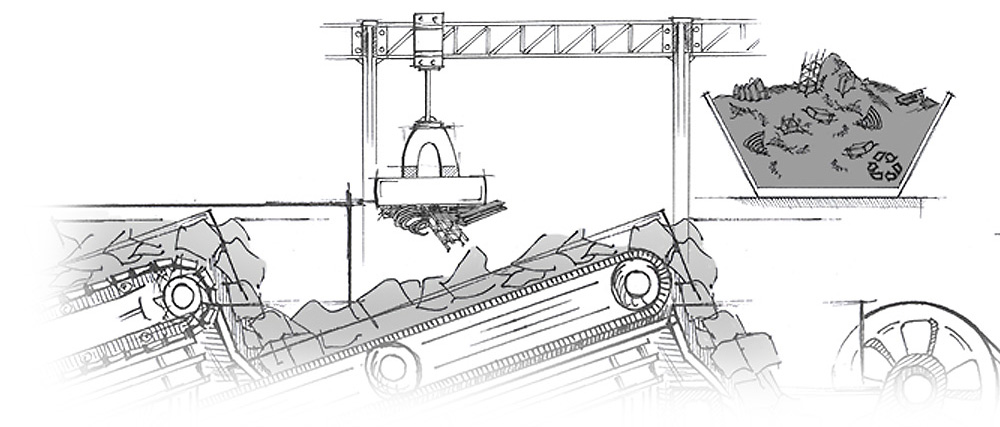

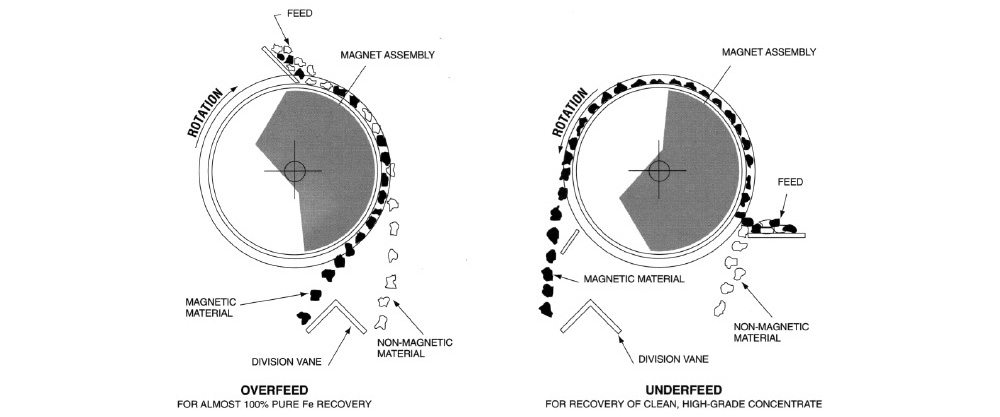
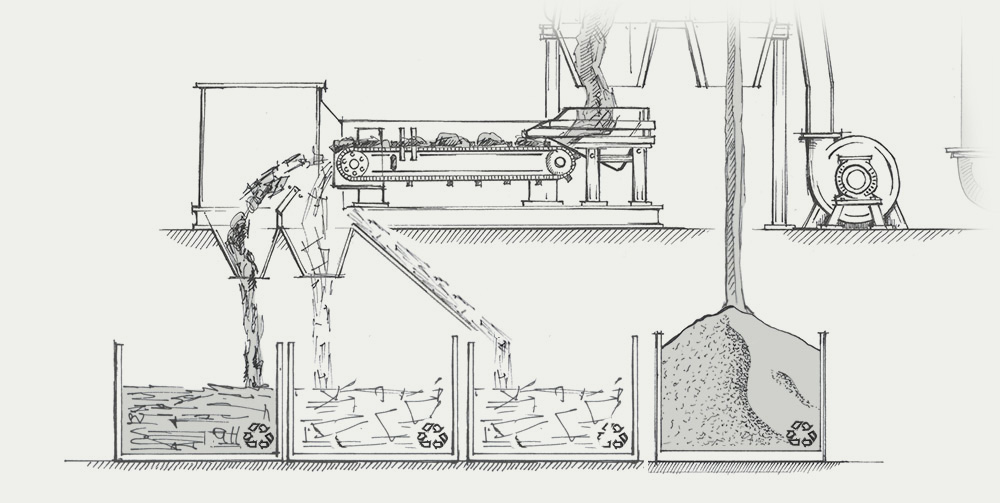
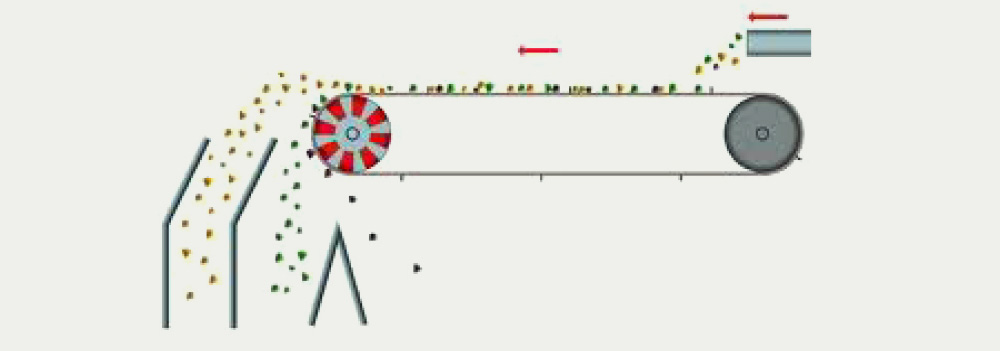
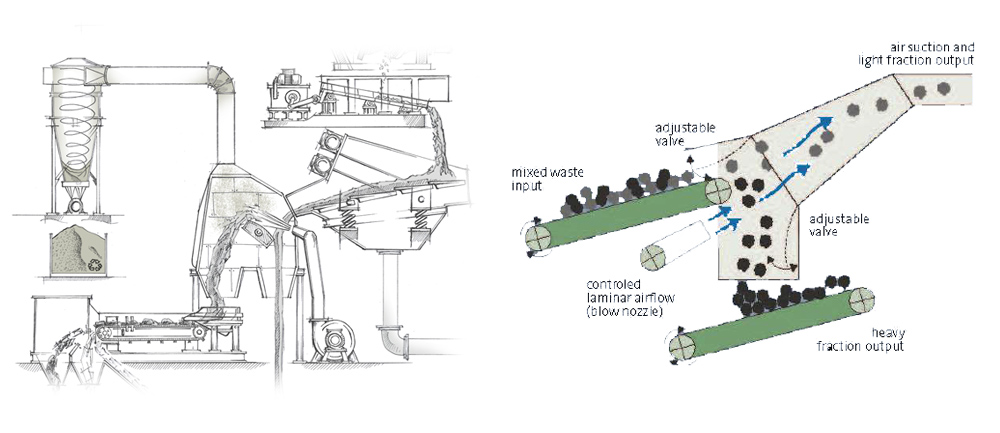
Crushing is the reduction of material into small pieces, by compression or impact.
Crushing by compression occurs by means of crushers that can be:
jaw crushers, cone crushers or roller mills.
The jaw crusher [180] has two steel, wear resistant plates. The first plate is fixed and is an integral part of the machine frame. It is called a fixed jaw. The other plate is called the swing jaw. The lower part of the swing jaw is hinged by a toggle to the machine frame, while the upper part is driven by an eccentric shaft. The space between the jaws is called the crushing chamber. Each time the shaft rotates, the eccentric movement of the swing jaw increases then reduces the space in the crushing chamber, and the material is consequently broken up.
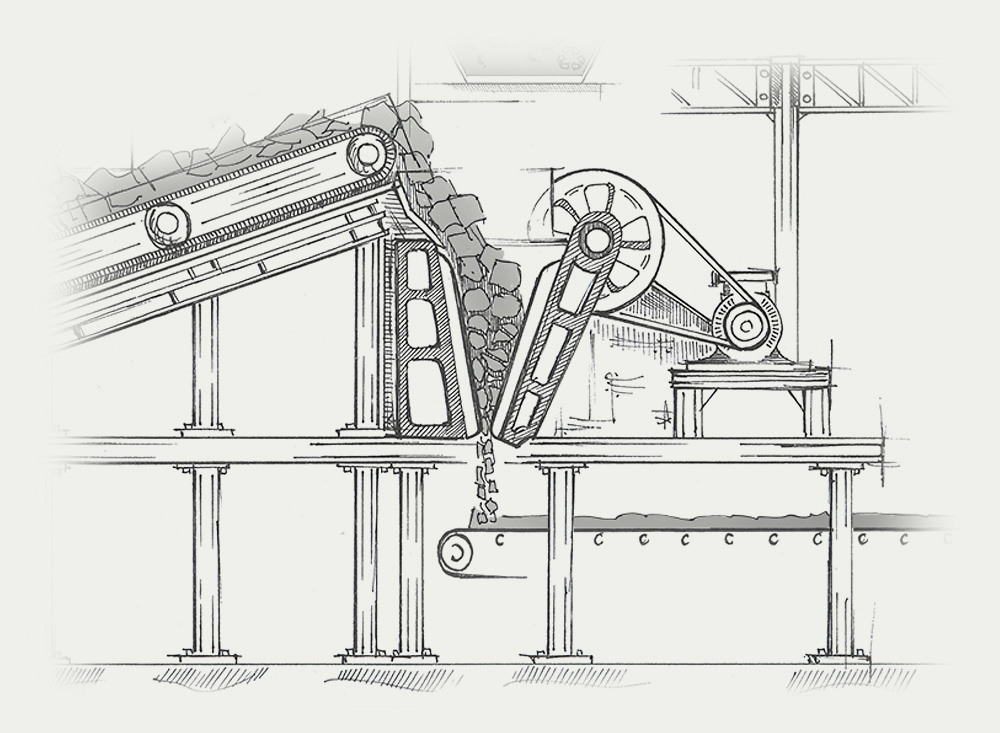
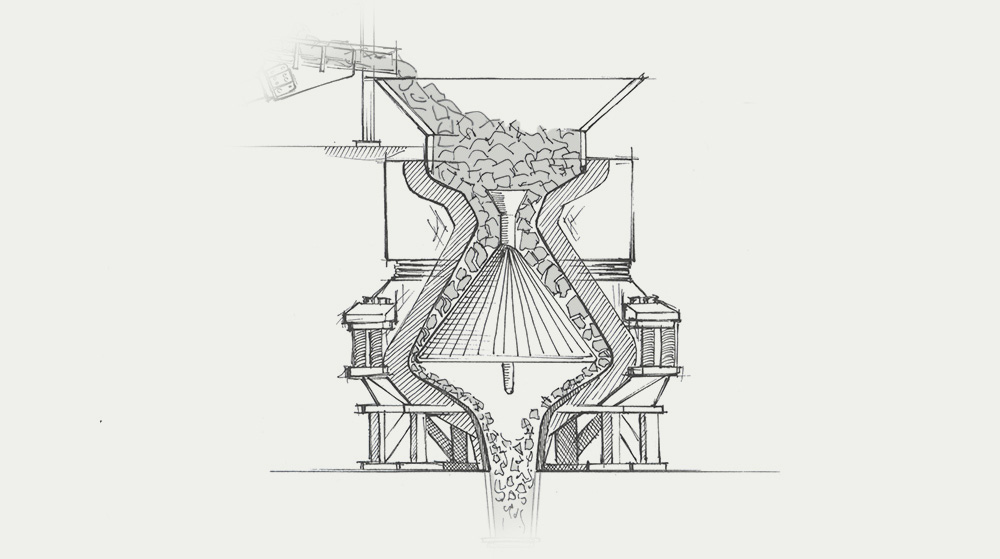
There are different types of roller crushers, but the operating principle remains the same. The material is broken up by being compressed between two or more rollers.
The rollers are normally cylindrical and can have a vertical or horizontal axis, but there are also crushers with conical rollers.
